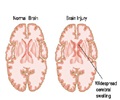Stuttering/Stammering -Speech Disfluencies
Employment opportunities are getting highly competitive and with a premium placed on soft skills— mainly, ability with language and communication, people who stutter lose a cutting edge at workplaces.
Irregularities in spoken utterances that hamper the flow of fluent speech are classified under the broad term, speech disfluencies. Repeated speech sounds, syllables, phrases that are restarted as in stuttering, intermittent pauses, words and sentences suspended in mid-utterance and unrecognizable utterances (er… umm…) used repeatedly as “fillers” are examples of speech disfluencies. Apart from
Speech disfluencies usually occur when a person is under stress, or extremely shy of strangers, anxious, or in particular situations like group discussions or facing an interview. Of all the speech disfluencies, stuttering can have a debilitating effect on the sufferer because it makes the person self-conscious and seriously hinders communication with others.
Avoidance behavior
In order to avoid stuttering, some people build up an entire vocabulary of simple words that are easy to pronounce and can help maintain fluent speech. Sometimes this ploy is so well used that even people close to the stuttering person may not realize that the person is camouflaging a
Therapies for teenagers
A teenager who stutters has a great deal of negative experiences by the time he is an adult. The constant threat of being ridiculed or shunned by others for disfluent speech can take a tremendous toll on the stuttering teenager’s everyday life.
Including peers in therapy is found to be a good strategy for treating teenagers who have a stuttering problem. Usually the teenager’s best friend can motivate and give reminders to the teenager to use his speech target behaviors.
Encouraging the teenager to get interested in an activity that requires speech, such as signing up at school drama clubs, may encourage the teenager to come out of his shell and interact with others. In the West, programs designed to prevent bullying in schools, sometimes tell kids not to harass a stuttering schoolmate.
Anti-Stuttering Devices
One way of improving fluency is changing how a stuttering person hears his or her voice. According to medical experts, the altered auditory feedback effect seems to be related to the central auditory processing disorder that is seen sometimes in the brain scans of adult stutterers. The altered auditory feedback effect can be made possible by speaking in a prolonged chorus with another person or hearing one’s voice echo by talking into a deep well. This effect is usually produced with the aid of electronic devices such as inner ear implants these days. The common types of these devices are:
- Delayed auditory feedback (DAF) that delays the speaker’s voice to his/her ear by a fraction of a second;
- Frequency-shifted auditory feedback (FAF) that changes the pitch of the speaker’s voice in his/her ears;
- Masking auditory feedback (MAF) in which a synthesized sine wave is sent to the user’s ears, in a frequency at which the user’s vocal cords are vibrating. Research is still going on in this area to improve the efficacy of these electronic devices.
Speech clinics
Speech clinics sometimes use the Fluency shaping therapy to help stutterers speak fluently. They are trained to breathe with their diaphragms, gradually increasing vocal cord tension while beginning words and stretching vowels to slow their speaking rate. Initially it may be an abnormal-sounding, monotonous, but fluent speech. Once the person who stutters is able to master these basic target speech behaviors, then he/she is encouraged to pick up speed and transfer it to daily usage in life.
Though a variety of treatments are available for speech disfluencies, there cannot be one standard treatment for stuttering because stuttering is caused by several interacting factors that are still being explored. Many speech language pathologists believe that an integrated approach to design therapy according to individual stutterer’s needs would be more effective than a single treatment.








